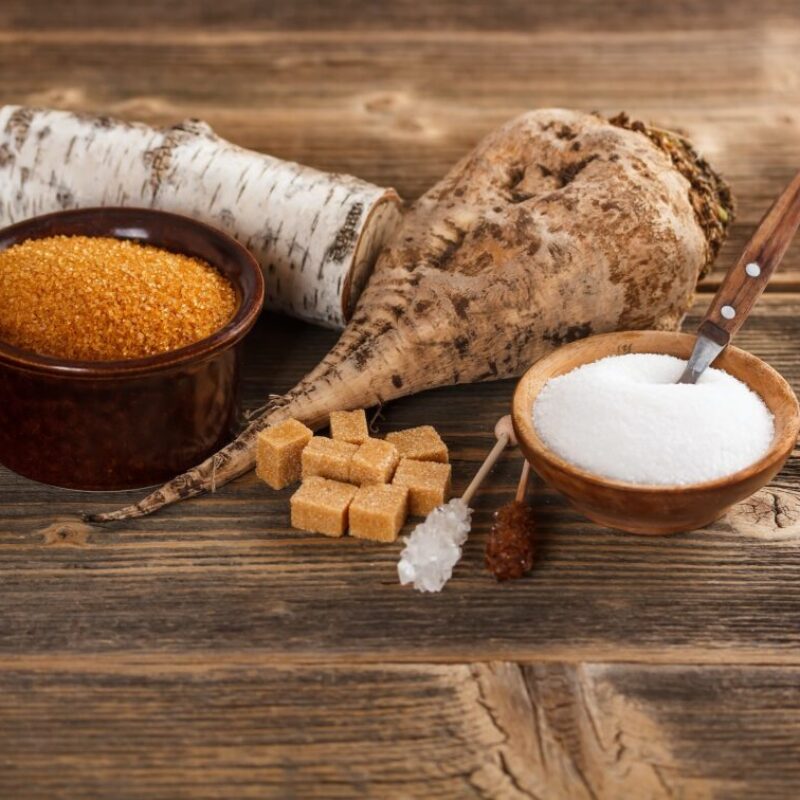Beet sugar is a form of sugar which is extracted from a cultivar of Beta vulgaris, the common beet. Around 30% of the world’s total sugar supply comes from beets. Most markets carry this sugar, although it may not always be explicitly labeled, and if you have white sugar in your cupboards, there is a good chance that it has been made from beets. Because beet sugar performs slightly differently than cane sugar, it can important to check sugar packaging to determine its source, especially when baking.
Humans have cultivated beets for thousands of years, and they may be among the oldest of European and Middle Eastern root vegetables. However, their potential as a source of sucrose was not realized until around the 1500s, and it took several hundred more years for a reliably sugar-high varietal of beet to be developed. In the early 1800s, beet sugar processing plants began opening in Europe, and they slowly spread to the United States.
One of the primary advantages of using beets for sugar is that beets can be cultivated in temperate climates, and they are very hardy. Sugar cane requires a tropical environment, and tropical land is often at a premium, since many people like visiting the tropics for vacations. The fact that sugar beets can be grown in cooler regions and on land of poor quality makes them an attractive alternative to cane as they are cheaper to grow. Beet sugar is also much easier to produce, requiring very basic processing at only one facility, rather than a two step process, as is needed for cane.

